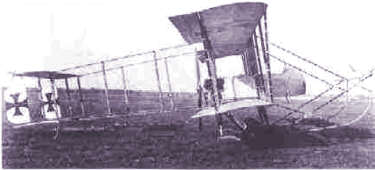 |
AIRCRAFTOF THEA E F |
MAURICE FARMAN S-7

Development and Operation
The design of the Maurice Farman M.F. 7, which first flew in 1913, was the culmination of the pre-war Maurice Farman design effort. A pusher design, it had a unique forward elevator positioned on curved extensions of the landing skids. It featured a biplane elevator located at the rear, supported by twin booms attached to the trailing portions of the top and bottom elevators. Dual mainwheels were mounted on skids and there were rubber shock absorbers. This configuration made the aircraft very easy to land, which, following its application as a viable military vehicle, meant that it soon adopted a role as an ideal primary trainer. |
Aircraft and Flight Characteristics
|
Engine |
Either a Renault 8B engine of 75 hp or a Rolls-Royce `Hawk' |
|
Span |
51 feet |
|
Length |
37 feet 3 inches |
|
Height |
11 feet 4 inches |
|
Weight |
|
|
Empty |
599 kg |
|
Loaded |
871 kg |
|
Maximum Speed (sea level) |
59 mph |
|
Climb |
164 feet/minute |
|
1000 feet |
15 minutes |
|
2000 ft. |
35 minutes |
|
Endurance |
5 hours |
References:
- Davilla, J. and Art Soltan, French Aircraft of the First World War
- O.G. Thetford, Aircraft of the 1914-1918 War
- Photo courtesy of the author.
To find other Doughboy Features visit our |
Membership Information  Click on Icon |
For further information on the events of 1914-1918
visit the homepage of |
Michael E. Hanlon (medwardh@hotmail.com) regarding content,
or toMike Iavarone (mikei01@execpc.com) regarding form and function.
Original artwork & copy; © 1998-2000, The Great War Society